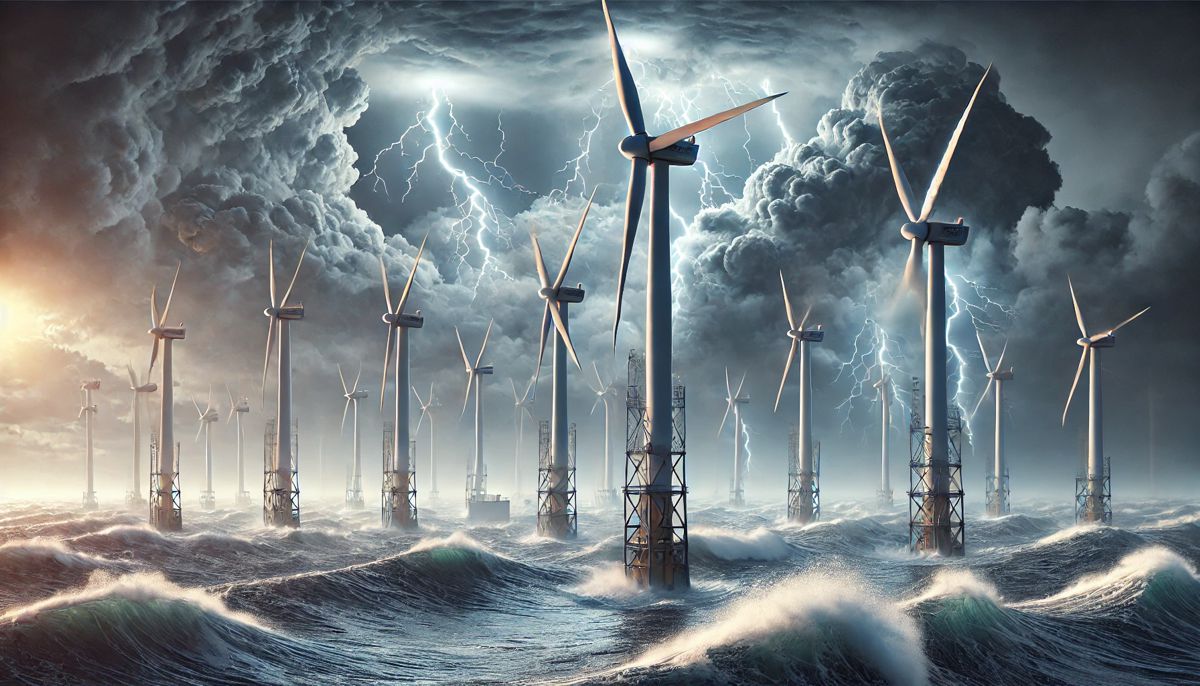Revolutionising Wind Turbine Protection with Positive Lightning Defence
As the demand for renewable energy soars, wind power has emerged as a cornerstone in the global shift towards sustainability. Offshore wind farms, with their towering turbines and optimal wind conditions, are central to this movement. However, these massive structures face a formidable adversary: positive lightning.
Unlike the more common negative polarity lightning, positive lightning packs a far greater punch. Characterised by its significantly higher current intensity, it poses a heightened risk of catastrophic damage. Positive lightning typically strikes during winter months when cloud altitudes are lower, and offshore wind farms, with their isolation and tall turbines, are particularly vulnerable. Damage to turbine blades can lead to costly repairs and operational downtime, derailing energy production.
A World-First Solution
Addressing this critical challenge, the Korea Electrotechnology Research Institute (KERI) has unveiled a ground-breaking technology to shield wind turbines from positive lightning. Dr. Woo Jeong-min and his team at KERI’s Electrical Environment Research Center have developed an innovative edge receptor, marking the first-ever solution to this unique lightning threat.
Current wind turbine designs rely on air-termination systems, a type of lightning rod installed at the blade tips. While effective against negative polarity lightning, these systems falter when it comes to positive lightning. The irregular strike patterns and higher current intensities of positive lightning demand a more advanced protective approach.
The Science Behind the Breakthrough
Through meticulous research, Dr. Woo’s team discovered a critical vulnerability in current blade designs. Positive lightning, rather than targeting the air-termination at the blade tip, tends to strike the side edges of the blade. This occurs because positive charges in the air accumulate near the air-termination, causing the similarly charged positive lightning to bypass the tip and target the negatively charged blade edges.
Using scaled-down models, high-resolution cameras, and precision measurement systems, KERI researchers simulated various lightning scenarios. They examined how blade rotation angles and material properties influenced lightning strikes. The data revealed that repositioning the air-termination system along the side edges of the blade could effectively redistribute charges, reducing the risk of damage.
This insight led to the creation of the edge receptor—a strategically positioned system that offers comprehensive protection against positive lightning. Artificial lightning experiments confirmed the efficacy of this innovation, demonstrating its potential to safeguard wind turbines even in the harshest conditions.
A Leap Forward for Renewable Energy
Dr. Woo Jeong-min emphasised the significance of this achievement, stating: “KERI is the only institution in the world that has designed countermeasures against positive polarity lightning for wind turbine blades and successfully conducted experimental verification. With our technology, we will greatly contribute to improving the stability and efficiency of wind turbines, promoting the expansion of renewable energy, and ultimately have a positive impact on reducing electricity bills for consumers.”
The research findings have garnered international acclaim, with a detailed paper published in Results in Engineering, a top-tier journal in renewable energy. Additionally, the study was featured in the official journal of the Conseil International des Grands Réseaux Electriques (CIGRE), solidifying its global relevance.
Future Applications and Aspirations
KERI’s edge receptor technology is set to undergo further testing on full-scale wind turbine blades. The institute aims to collect more experimental data, register patents, and facilitate technology transfers to industry players. The potential applications extend beyond wind power; tall buildings, communication towers, and other lightning-prone structures could also benefit from this innovation.
This research, funded by the Korea Energy Technology Evaluation and Planning (KETEP) under the Ministry of Science and ICT, is part of a broader initiative to enhance lightning protection for large-scale offshore wind farms. By addressing a critical vulnerability in renewable energy infrastructure, KERI is not just solving a problem—it’s paving the way for a more resilient and sustainable energy future.
A Positive Outlook for Renewable Energy
KERI’s breakthrough underscores the importance of continuous innovation in renewable energy. By tackling the unique challenges posed by positive lightning, the institute is enhancing the reliability and efficiency of offshore wind farms.
This advancement not only supports the global transition to renewable energy but also ensures a more stable and affordable energy supply for consumers. With continued research and development, the future of wind energy looks brighter than ever.




















